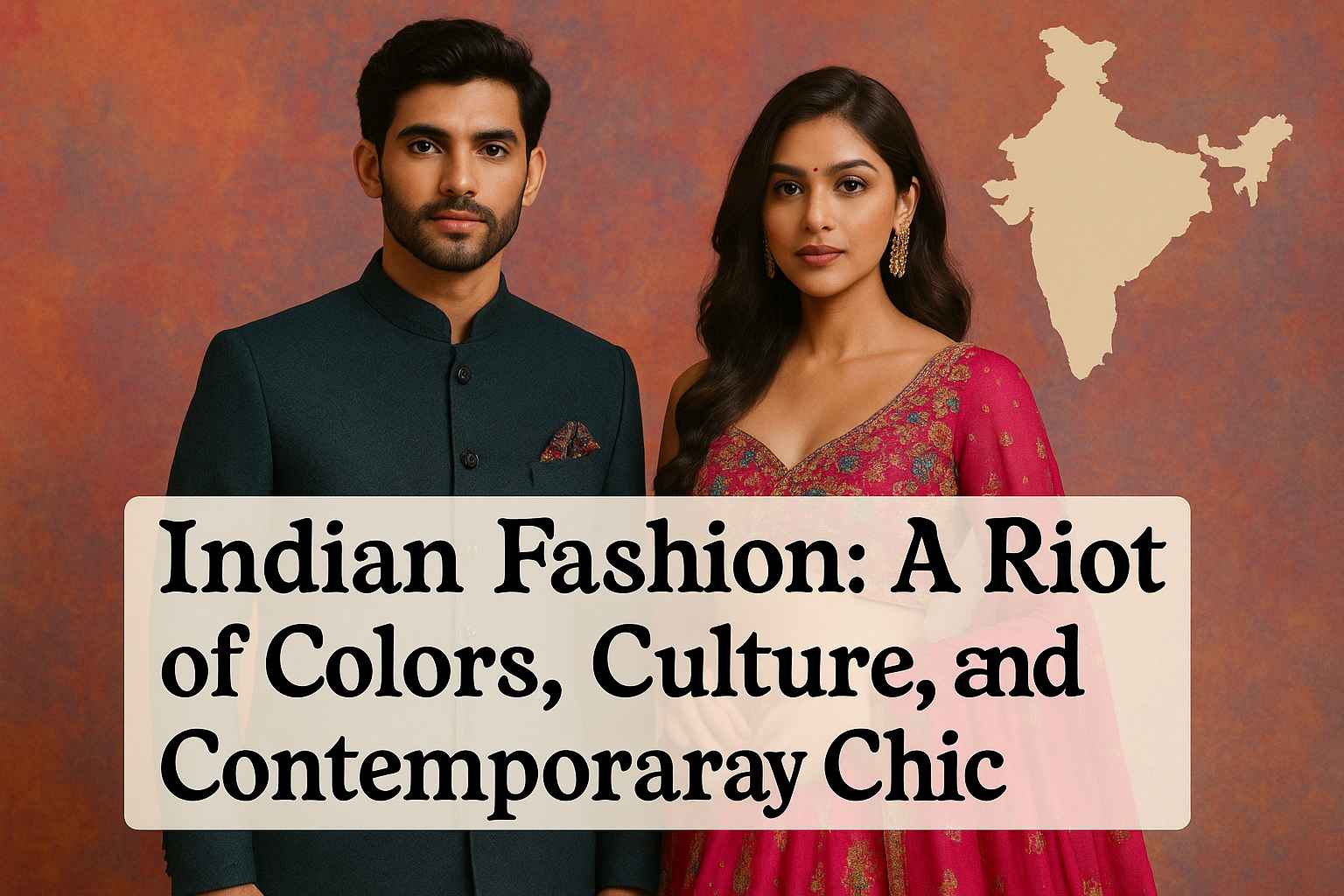India—the world’s most populous democracy and an ethnic kaleidoscope—thrives on its unapologetic love for dance, music, films, spices, and, of course, fashion! Indian fashion is a breathtaking fusion of modern trends and age-old traditions, creating looks that are vibrant, exotic, and utterly captivating. For any globe-trotting fashionista, exploring India’s style scene is an absolute must. Whether dressing for yourself or your significant other, understanding Indian fashion will elevate your wardrobe. So, let’s embark on this spectacular sartorial journey, covering everything from men’s and women’s clothing to footwear and treasured accessories. Get ready—India’s fashion world awaits!
India’s fashion philosophy:
Indian fashion is all about contrasts—it’s where tradition meets modern style, and simplicity blends effortlessly with luxury. It’s a world of vibrant colors, rich fabrics, and intricate details, each piece carrying a story of culture and craftsmanship. A saree drapes gracefully, a sherwani commands elegance, and a lehenga burst with life—all showcasing India’s love for expressive fashion. Whether it’s a centuries-old weaving technique or a bold new fusion trend, Indian fashion is always evolving, balancing the old and the new, the modest and the daring, in a way that feels both timeless and fresh.
Now we are set to know about the most popular traditional Indian sartorial specialities. You can wear anything you want in India, but trying out these items will make you fall in love with india fashion traditions.
Men’s clothing:
Indian men love blending traditional attire with modern pieces, creating a unique fusion known as the Indo-Western aesthetic. This style effortlessly combines heritage with contemporary fashion, resulting in outfits that are both stylish and culturally rich. Here are some of the most popular traditional and Indo-Western clothing items for men—both tops and bottoms—that you’ll absolutely love to know about and maybe even try some of them yourself!
1. Kurta Pajama
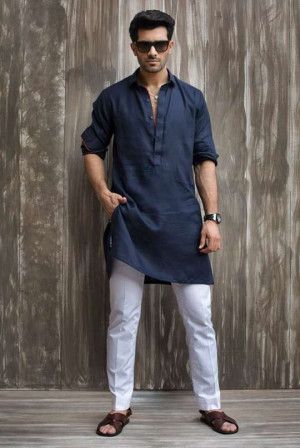
A kurta pajama is a classic Indian outfit consisting of a long tunic (kurta) paired with loose-fitting or tapered trousers (pajama). It is worn casually at home, for festive occasions, and even as formal wear when paired with a Nehru jacket or waistcoat. The outfit is comfortable, breathable, and available in both simple cotton for daily wear and rich silks for special events.
2. Pathani Suit

The Pathani suit, inspired by traditional Afghan attire, features a knee-length, straight-cut kurta with a buttoned-up collar and loose salwar pants. Often worn by men in North India and Bollywood celebrities, it exudes a bold and masculine look. It’s popular for festive gatherings, weddings, and even casual outings when styled with a scarf or jacket.
3. Bandhgala or Jodhpuri Suit
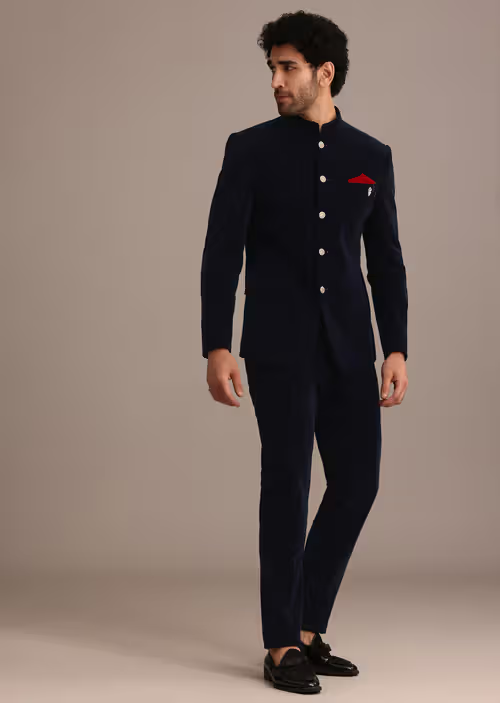
The Bandhgala, also called the Jodhpuri suit, is an elegant, fitted suit with a high, closed-collar jacket worn over trousers. This royal-inspired outfit, often made of luxurious fabrics with embroidery or detailing, is a go-to choice for formal events, weddings, and official functions. It blends Western tailoring with Indian aesthetics, making it a sophisticated fusion look.
4. Patiala Suit
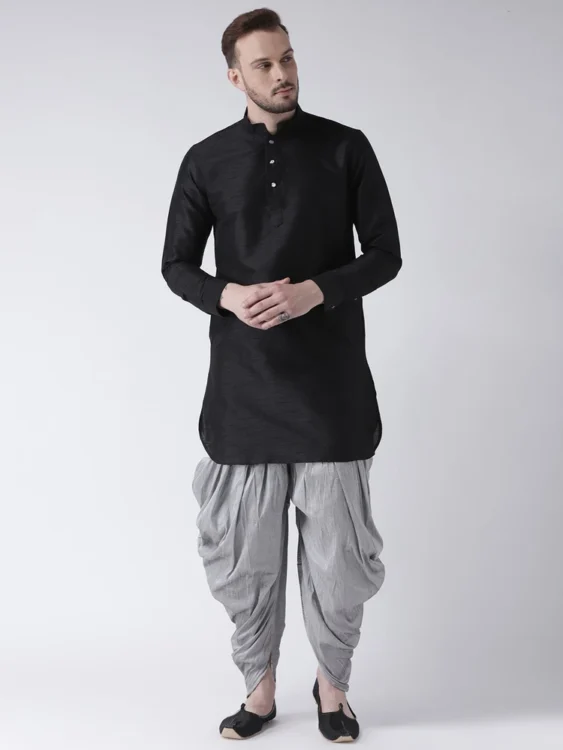
The Patiala suit consists of a loose, pleated Patiala salwar (trousers) paired with a short, fitted kurta. Originally from Punjab, this outfit is traditionally worn by men for comfort and ease of movement. Though more popular in women’s fashion today, men still wear it in Punjabi cultural events, Bhangra performances, and festivals.
5. Dhoti Pants
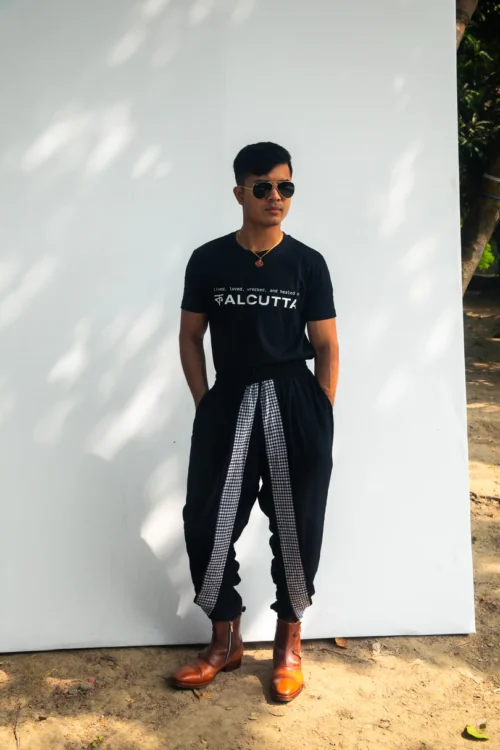
Dhoti pants are a modern, stitched version of the traditional dhoti, designed for easy wear while maintaining the draped look. These loose, pleated trousers are usually worn with a kurta, waistcoat, or even a sherwani for a fusion look. Dhoti pants have become a trendy alternative for weddings and cultural events, giving a contemporary twist to heritage fashion. image source
6. Achkan
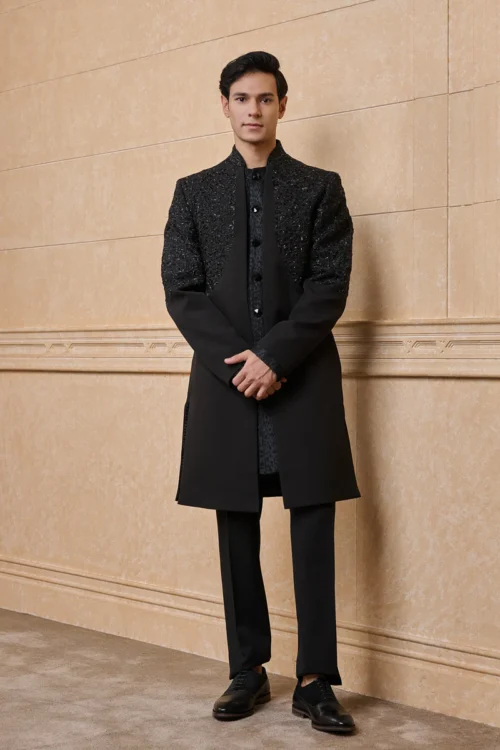
An achkan is a long, formal coat-like garment, typically knee-length, worn with churidars or dhoti pants. It is similar to a sherwani but lighter and often worn by grooms, royals, and dignitaries. Achkans, made of fine silk or brocade, are preferred for semi-formal events, especially in North India. Image source
7. Sherwani

A sherwani is the ultimate Indian wedding outfit for grooms, featuring a heavily embroidered, knee-length or longer coat worn over a kurta and churidar or dhoti. It is paired with a stole, turban, and sometimes a brooch or mala (neckpiece). Worn mostly on grand occasions, the sherwani symbolizes luxury, tradition, and status.
8. Nehru Jacket

The Nehru jacket is a hip-length, buttoned-up vest with a closed mandarin collar, named after India’s first Prime Minister, Jawaharlal Nehru. This versatile jacket can be worn over a kurta pajama or even a shirt and trousers, making it a smart casual or formal wear choice for weddings, office meetings, and political events. Image source
9. Churidar
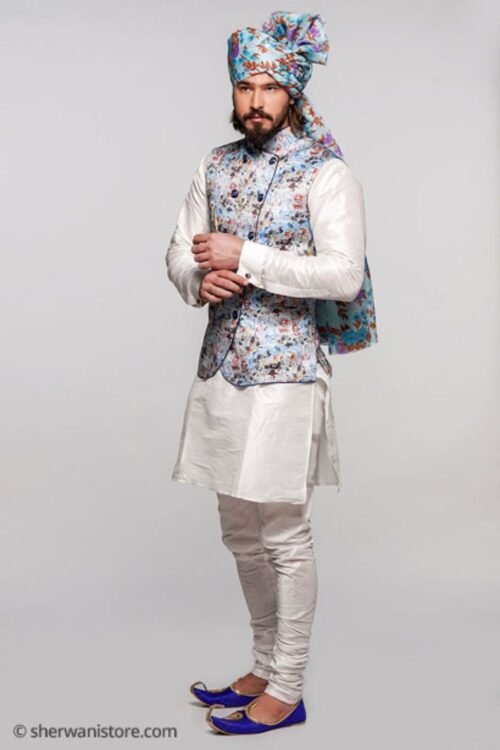
Churidar is a type of slim-fitting trouser that tapers tightly around the ankles, forming folds (churis) at the bottom. Worn under kurtas, sherwanis, or achkans, it provides a structured and refined look. Churidars are a staple in Indian festive and wedding fashion, preferred over looser pajama styles for a more tailored silhouette.
10. Traditional Indian Waistcoat or Bandi

A bandi is a sleeveless, tailored waistcoat often worn over a kurta pajama or Pathani suit for a polished, festive look. It adds sophistication to an outfit without being overly formal. Bandis come in various fabrics, from cotton for casual wear to silk or brocade for grand occasions, making them a go-to layering piece for men across India.
11. Langot
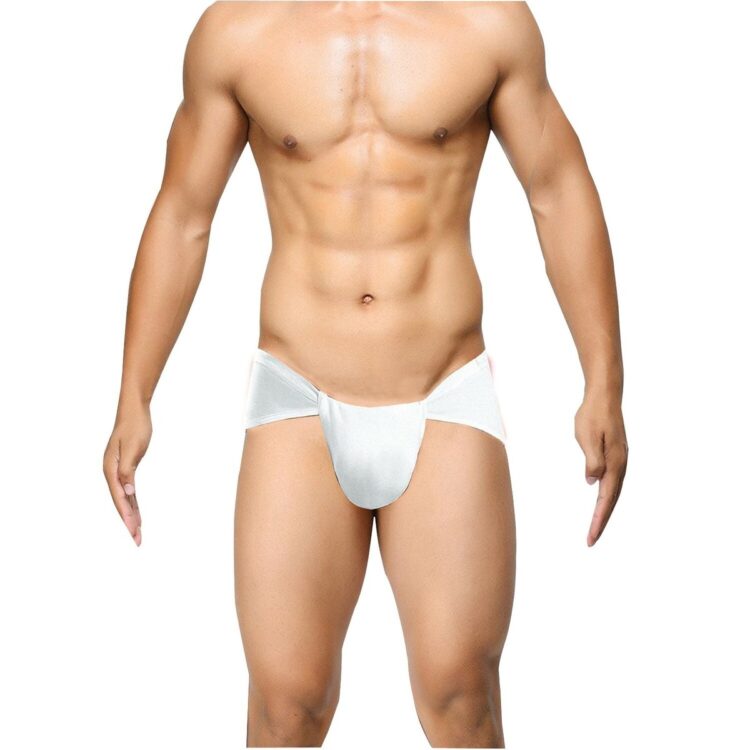
The langot is a traditional Indian loincloth or undergarment, primarily worn by wrestlers (pehelwans) and kabaddi players for support and flexibility. Once a staple in traditional Indian sports, it has now found a niche among fitness enthusiasts who appreciate its old-school charm. While its revealing design makes it a bold choice, some adventurous tourists have even adopted it as a unique beachwear option—sure to turn heads!
India’s fashion: Women’s garments unique to India:
Modern Indian traditional fashion for women blends heritage with self-expression, showcasing elegance and vibrance. From intricately embroidered sarees to bold, fusion lehenga sets, every outfit is a statement of identity and grace. Rich colors, exquisite craftsmanship, and contemporary styling empower women to celebrate culture, individuality, and timeless beauty with confidence.
1. Sari
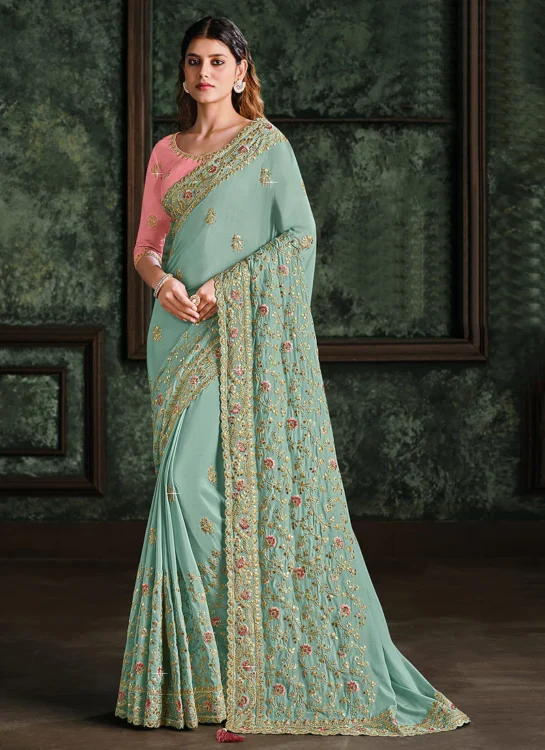
The sari is India’s most iconic women’s attire, a graceful, draped garment worn over a fitted blouse and petticoat. It comes in countless fabrics and styles, from everyday cotton saris to heavily embroidered silk ones for weddings and celebrations. image source
2. Salwar Kameez
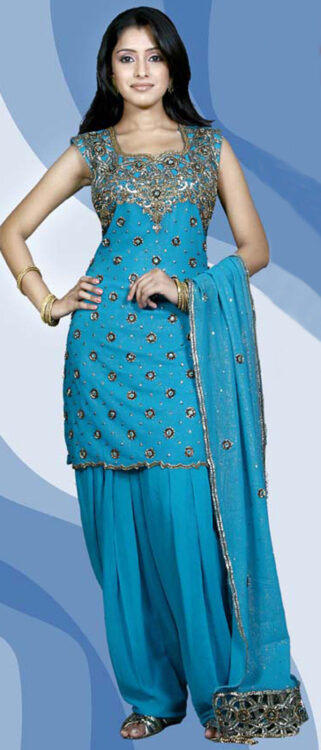
A staple in North India, the salwar kameez consists of a long tunic (kameez) paired with loose-fitting trousers (salwar) and a matching dupatta. It’s comfortable, stylish, and suitable for both casual and formal occasions.
3. Patiala Suit
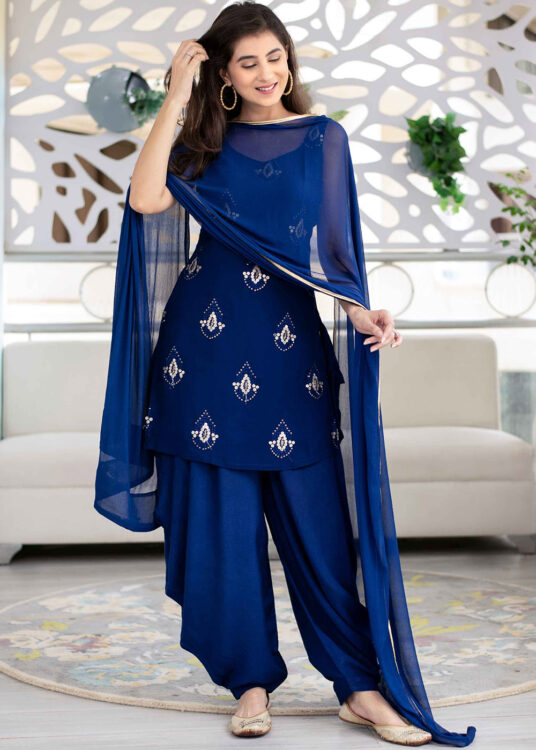
The Patiala suit features a short, fitted kameez with voluminous, pleated Patiala salwar pants. Originally from Punjab, it is loved for its flowy silhouette and ease of movement, making it a favorite for everyday wear and festive occasions.
4. Lehenga Choli
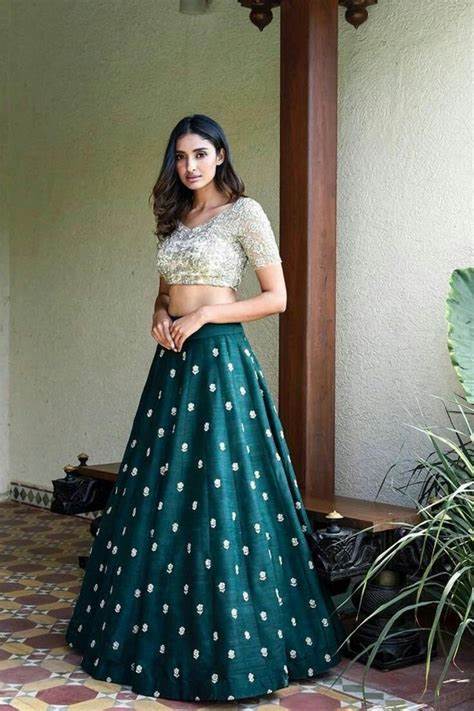
A lehenga choli is a grand, three-piece ensemble consisting of a long, flared skirt (lehenga), a cropped blouse (choli), and a dupatta. Adorned with intricate embroidery, it is a top choice for brides and festive occasions.
5. Ghaghra Choli
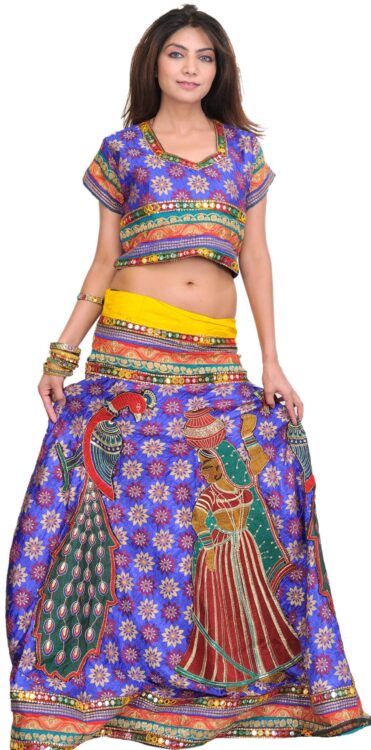
Similar to the lehenga choli but often lighter and more casual, the ghaghra choli is widely worn in Gujarat and Rajasthan. It’s a vibrant and playful outfit, often paired with mirror work and embroidery, especially during Navratri and folk dances.
6. Anarkali Suit

An Anarkali suit features a long, flowy frock-style tunic paired with leggings or churidar pants. Inspired by Mughal-era fashion, it is a regal yet comfortable choice for weddings, parties, and festive gatherings.
7. Sharara Pants:
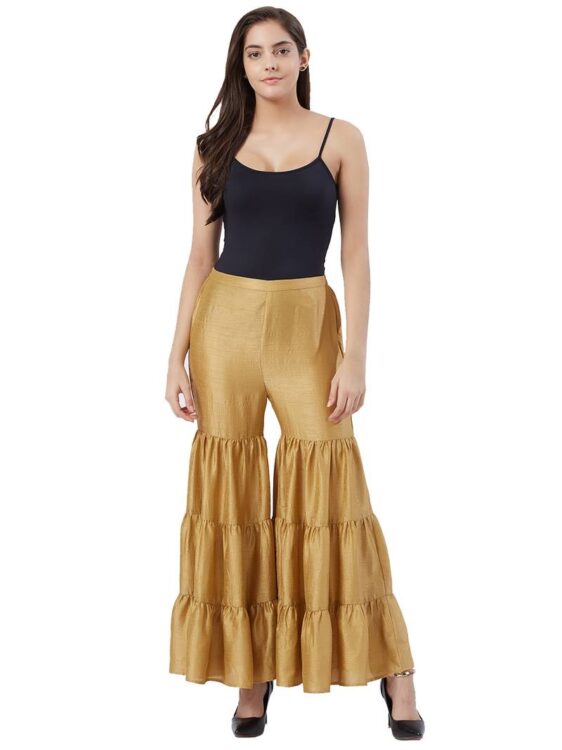
Sharara pants are wide-legged, flared trousers traditionally worn in South Asian fashion. They are made from fabrics like silk, chiffon, georgette, velvet, or cotton, often adorned with embroidery or embellishments. Paired with a short kurti or a long tunic and a dupatta, women wear them for festive occasions, weddings, and cultural events.
8. Churidar
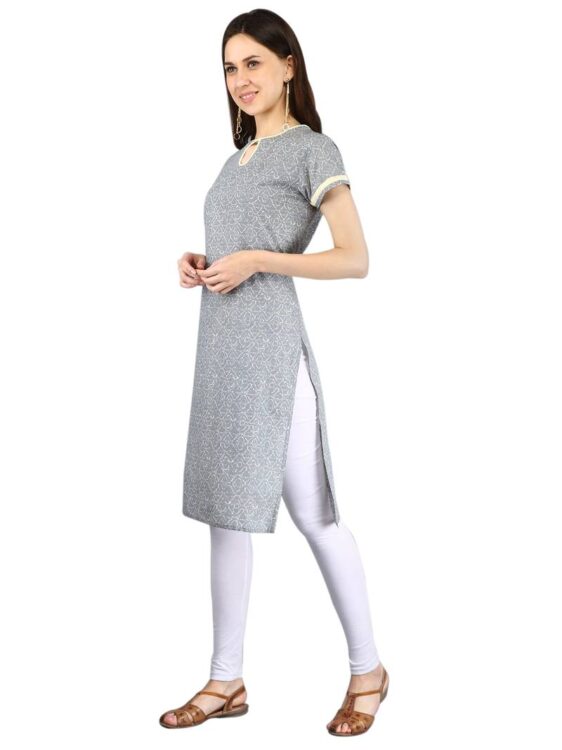
Churidar pants are slim-fitting skinny trousers that taper at the ankles, forming pleats (churis) for a snug yet elegant look. They are worn with kurtas, anarkalis, or long tunics, making them a versatile ethnic staple.
9. Kurti
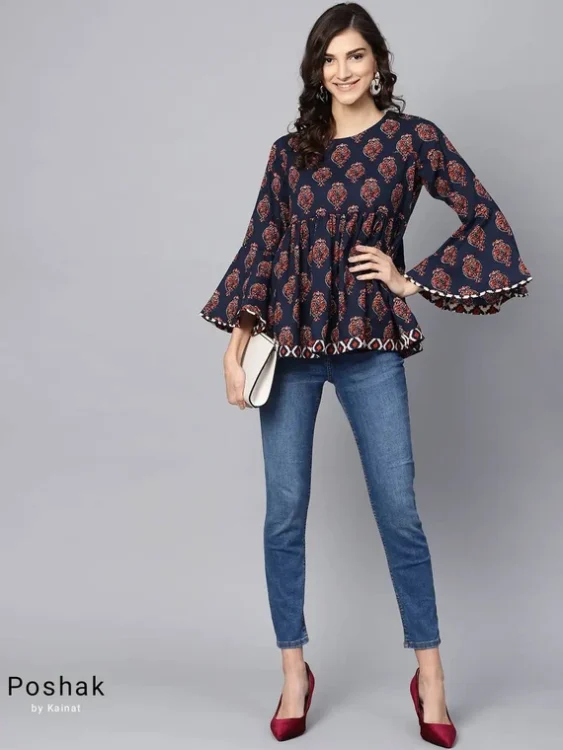
A kurti is a shorter, modern version of the kameez, worn with jeans, leggings, or palazzos. Comfortable and stylish, it blends traditional charm with contemporary fashion, making it a go-to choice for daily wear.
10. Phulkari Dupatta
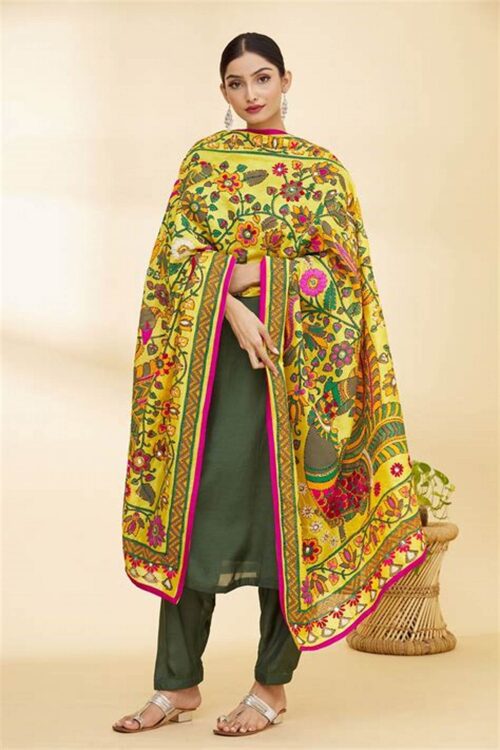
The Phulkari dupatta is a hand-embroidered shawl from Punjab, featuring vibrant floral patterns. Traditionally worn with salwar kameez, it adds a colorful, festive touch to any outfit and represents Punjabi cultural heritage.
Footwear fun:
Indian footwear seamlessly blends tradition and modern style, offering classic designs that remain beloved across generations. From intricately embroidered Mojaris to elegant Kolhapuri chappals, these timeless pieces reflect heritage, artistry, and self-expression. Rich colors, detailed craftsmanship, and cultural significance make them staples in wardrobes, celebrating India’s diverse fashion legacy.
Jutti
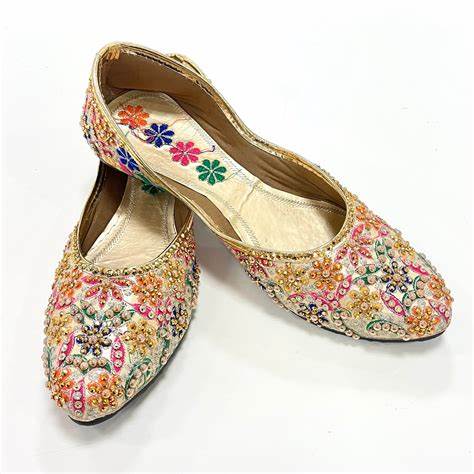
Jutti is a traditional North Indian footwear style, known for its closed-toe design and intricate embroidery. Made from leather, velvet, or fabric, juttis are often embellished with beads, sequins, or threadwork. They have a flat sole and a snug fit, making them comfortable for daily wear and festive occasions. Juttis are commonly paired with ethnic outfits like salwar kameez, lehengas, and sherwanis, adding a regal touch to traditional attire.
Kolhapuri slippers.
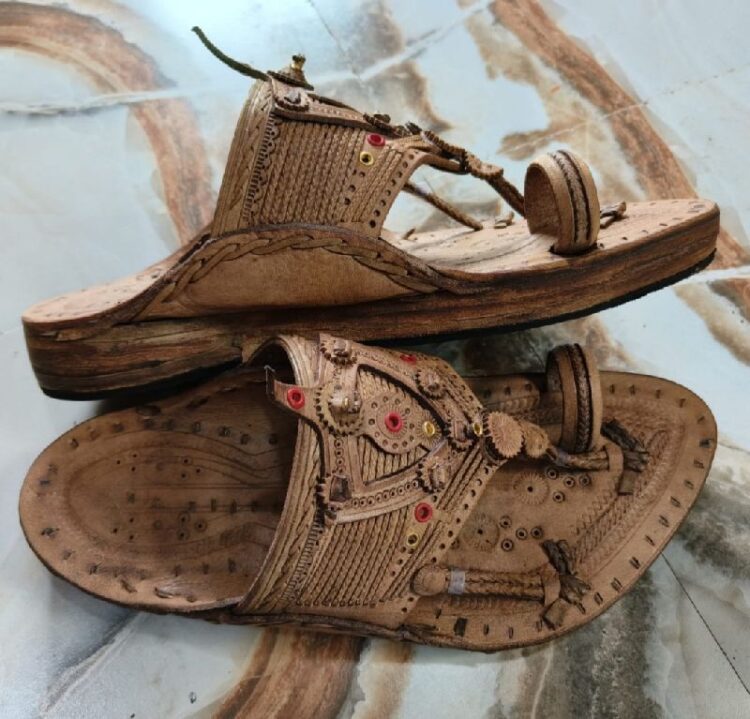
Kolhapuri slippers or chappals, are traditional handcrafted leather footwear originating from Kolhapur, Maharashtra, India. These shoes are open-toed, T-strap sandals made from genuine leather and tanned using vegetable dyes.
Kolhapuri chappals have a rich history, dating back to the 13th century, and were initially crafted for durability, capable of withstanding extreme heat and rugged terrain. Over time, they evolved into fashion statements, featuring intricate designs, embellishments like gold cord, zari strips, pom-poms, and vibrant colors.
They are handmade by artisans using traditional techniques, without nails or synthetic materials, making them comfortable and long-lasting. Kolhapuri chappals received a Geographical Indication (GI) tag in 2019, recognizing their authenticity and craftsmanship
Mojari
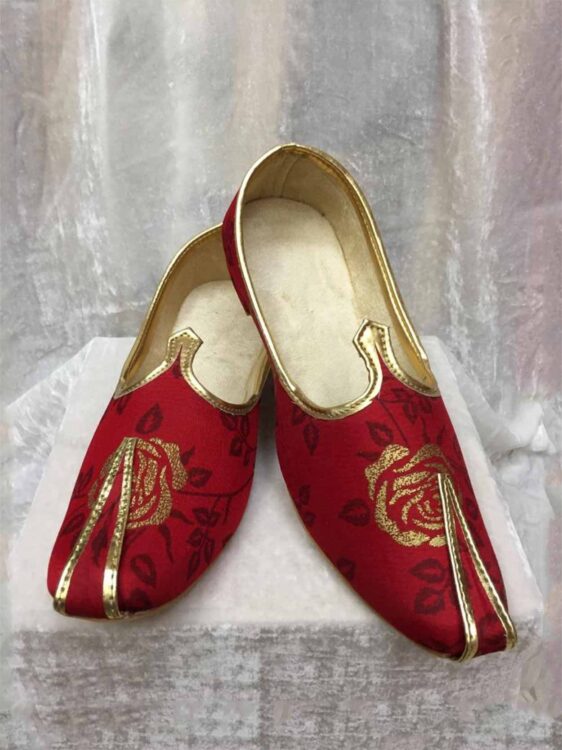
Mojari is an elegant slip-on shoe with a pointed or slightly curved toe, often adorned with intricate embroidery or mirror work. Crafted from leather, silk, or velvet, mojari shoes are lightweight and comfortable. They are commonly worn with traditional Indian attire like sherwanis, kurtas, and lehengas, making them a popular choice for weddings and cultural events. Their artistic craftsmanship reflects the rich heritage of Indian footwear.
Nagra Shoes
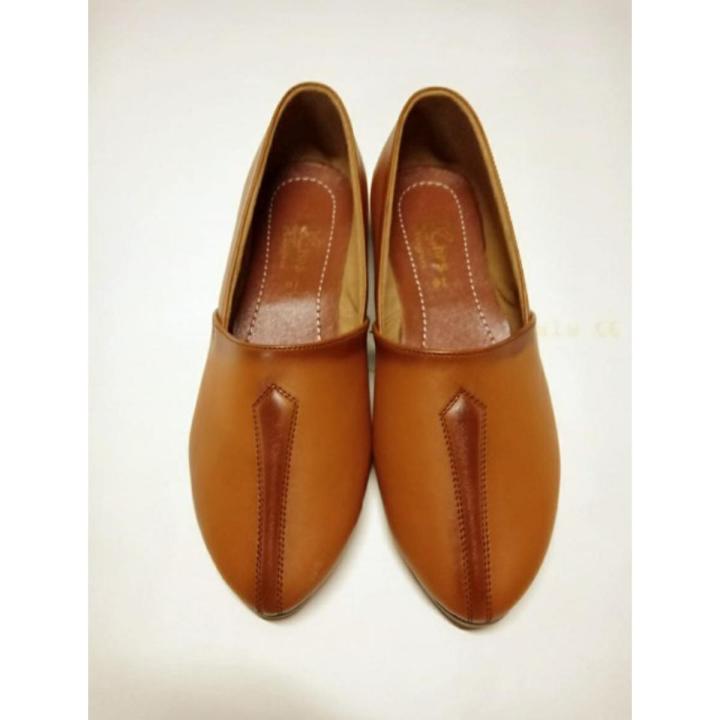
Nagra shoes are a more ornate version of juttis, distinguished by their curved toe and elaborate embroidery. Made from leather, velvet, or brocade, they are often embellished with gold or silver threadwork, beads, and sequins. These shoes are commonly worn with sherwanis and kurtas for weddings and festive occasions, adding a royal touch to traditional Indian attire. Their luxurious design makes them a statement piece in ethnic fashion.
Khussa
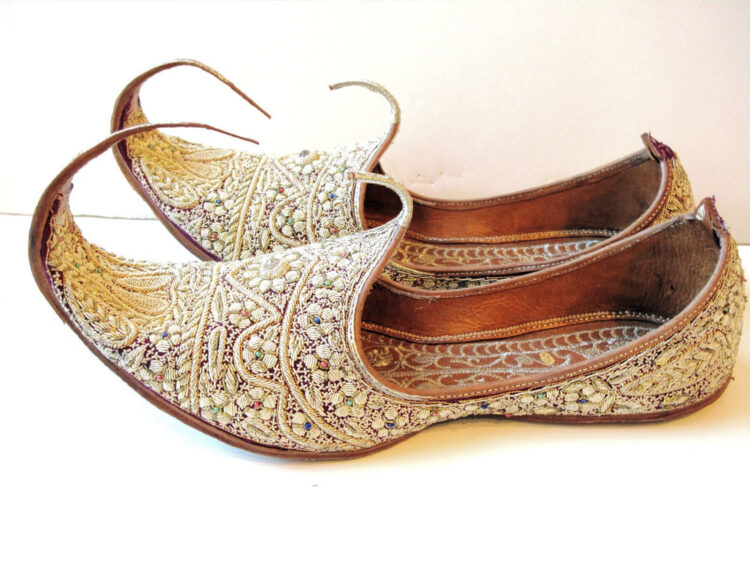
Khussa shoes are traditional slip-on footwear with a pointed toe and intricate embroidery. Made from leather, silk, or velvet, they are adorned with colorful threadwork, beads, and sequins. Khussas are popular in North India and Pakistan, often worn with ethnic outfits like salwar kameez, lehengas, and sherwanis. Their comfortable fit and artistic craftsmanship make them a preferred choice for weddings and cultural celebrations.
Indian fashion accessories and iconic jewelry:
Fashion accessories play a vital role in enhancing style, personality, and elegance for both men and women. In Indian fashion, accessories like intricate jewelry, embroidered clutches, turbans, and stoles add depth to traditional attire, creating a look of refinement and sophistication. From statement bangles to royal brooches, these adornments or fashion accessories reflect heritage and craftsmanship, embodying India’s rich cultural legacy while elevating modern fashion with timeless grace.
1. Traditional Indian Stole or Dupatta
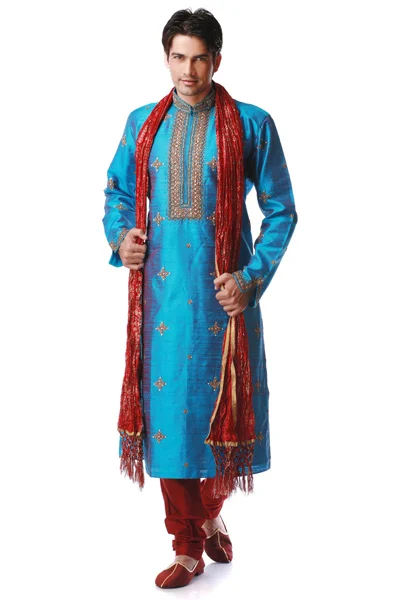
A versatile piece of fabric worn over the shoulders, the dupatta adds elegance to both men’s and women’s traditional outfits. It comes in various materials, from simple cotton to heavily embroidered silk, making it suitable for both casual and festive wear.
2. Angavastram
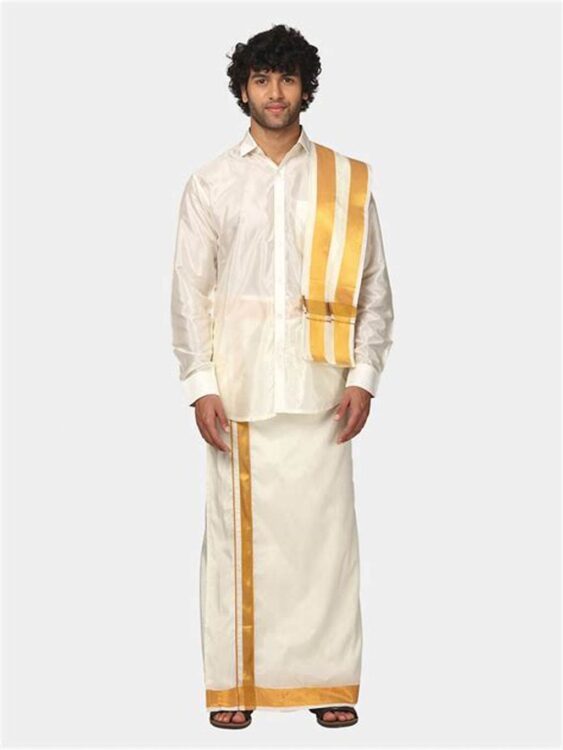
A sacred and ceremonial shawl worn by men, draped over the shoulders as a mark of respect and tradition. It is commonly worn with dhotis and kurtas, especially during religious and formal occasions.
3. Turban
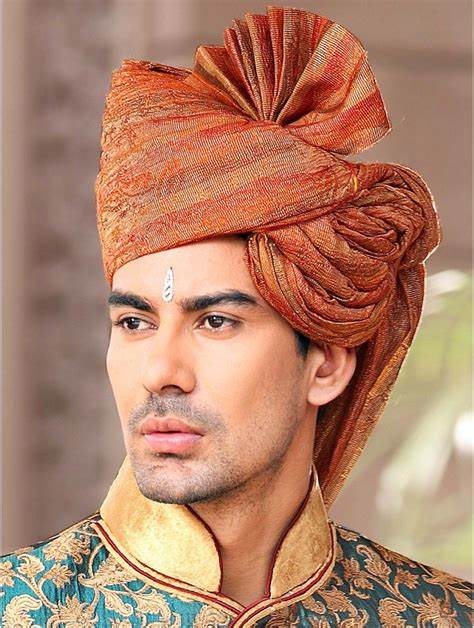
A symbol of pride and honor, the turban is worn by men across India in various regional styles. Whether simple or elaborately tied, it represents cultural heritage and is often seen in weddings and festivals.
4. Turban Sarpech
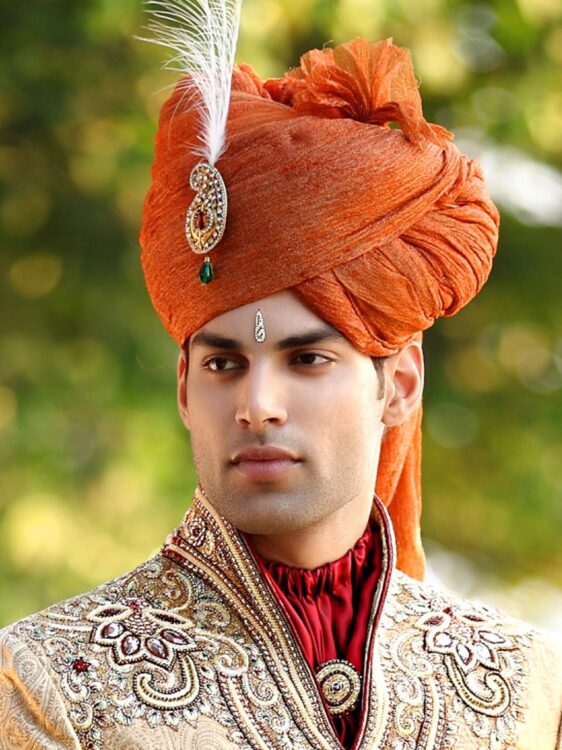
An ornate turban ornament, the sarpech is a jeweled brooch-like accessory, traditionally worn by royalty and grooms. It adds a regal touch to the turban, often featuring pearls, gemstones, and intricate metalwork.
5. Payal
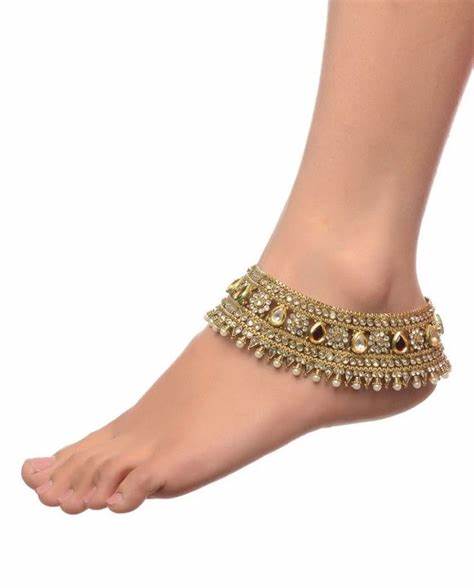
Ankle jewelry worn by women, payals (anklets) are often crafted in silver and adorned with tiny bells that create a melodious sound while walking. They symbolize grace and femininity in Indian culture.
6. Hathphool
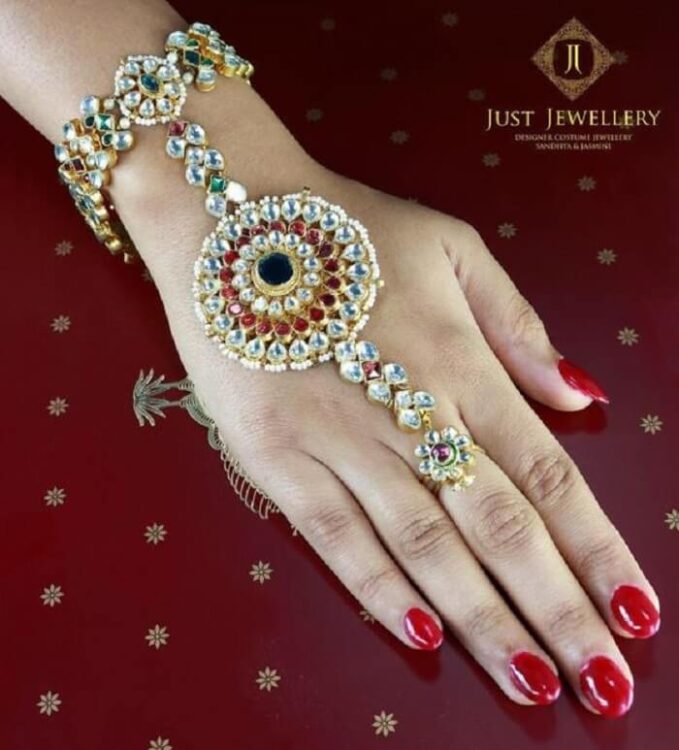
A stunning hand ornament connecting rings to a bracelet, hathphool is traditionally worn by brides and women during special occasions. It enhances the beauty of hands with intricate designs and embellishments.
7. Rani Haar
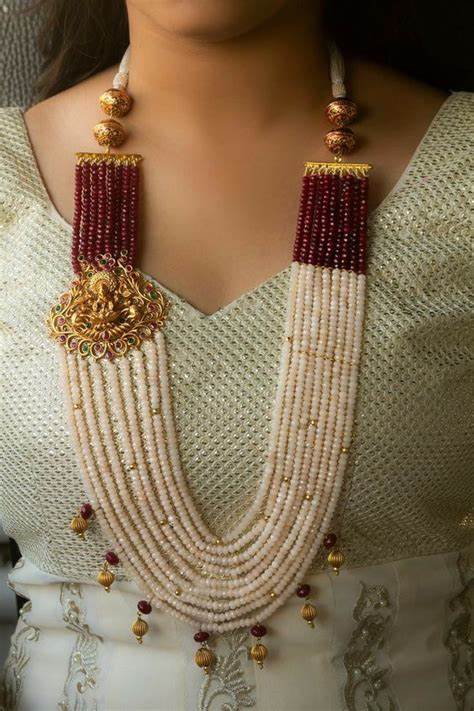
A long, elaborate necklace often made of gold and precious gemstones, the Rani Haar exudes royal elegance. It is a statement piece commonly worn by brides and for grand celebrations.
8. Chandbali
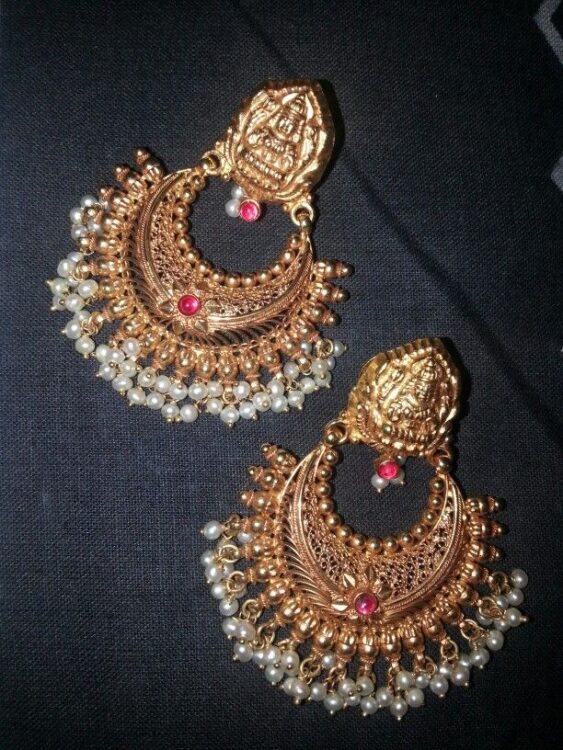
Moon-shaped earrings with intricate detailing, Chandbalis are a Mughal-era-inspired accessory that adds a touch of royalty to ethnic outfits. They are a favorite choice for weddings and festivals.
9. Jhumka
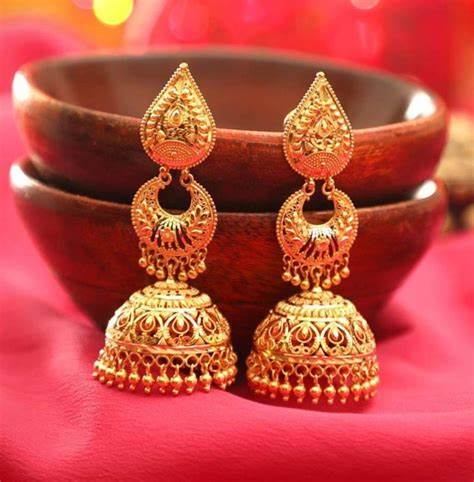
Traditional bell-shaped earrings, jhumkas are a timeless favorite, available in both minimalist and heavily ornamented designs. Their swaying motion and intricate patterns make them a must-have in Indian jewelry.
10. Vanki
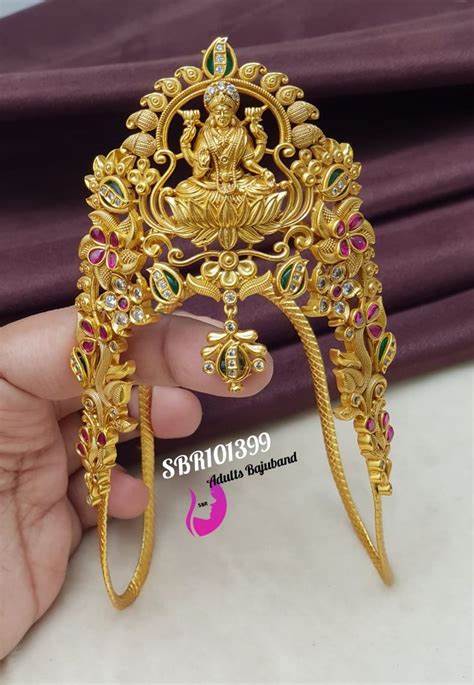
A traditional armlet worn by South Indian brides, the Vanki features distinctive inverted V-shaped designs. Often studded with gold, diamonds, or temple motifs, it enhances the grace of traditional attire.
11. Jaapi hat:
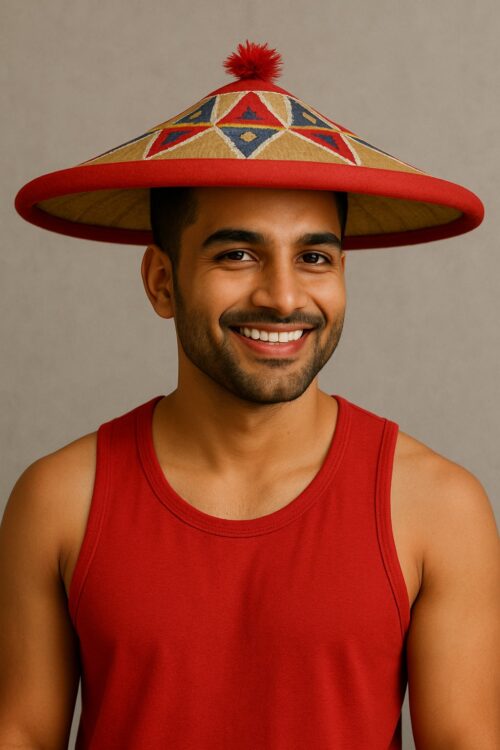
The Jaapi is a traditional Assamese conical hat, woven from bamboo and palm leaves, with a wide brim shielding farmers from the scorching sun. It features intricate star-shaped patterns, crafted in red, white, green, and black fabric, symbolizing Assamese heritage. Once a mark of nobility, it now enhances fashion, Bihu performances, and ceremonial events.

